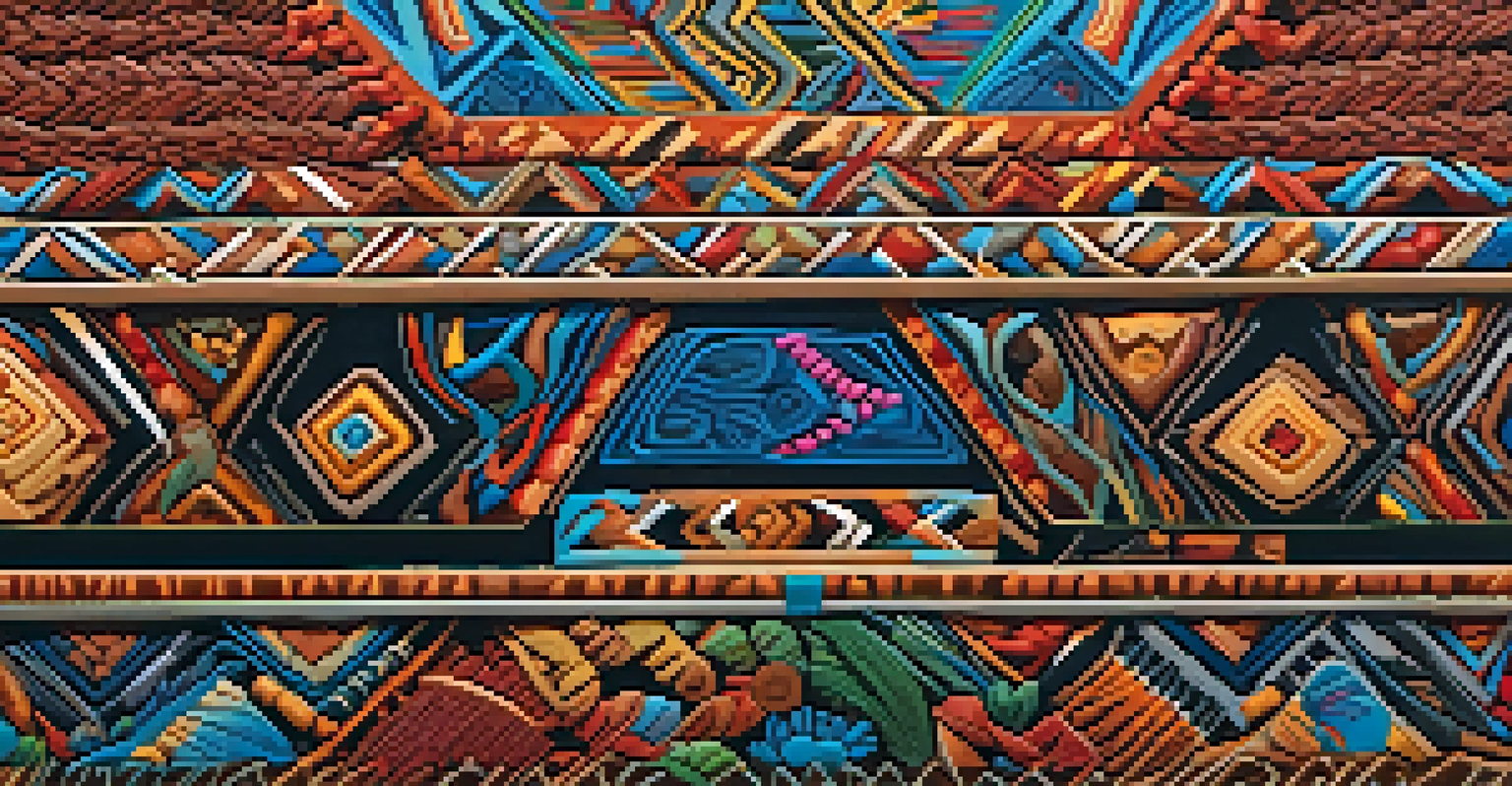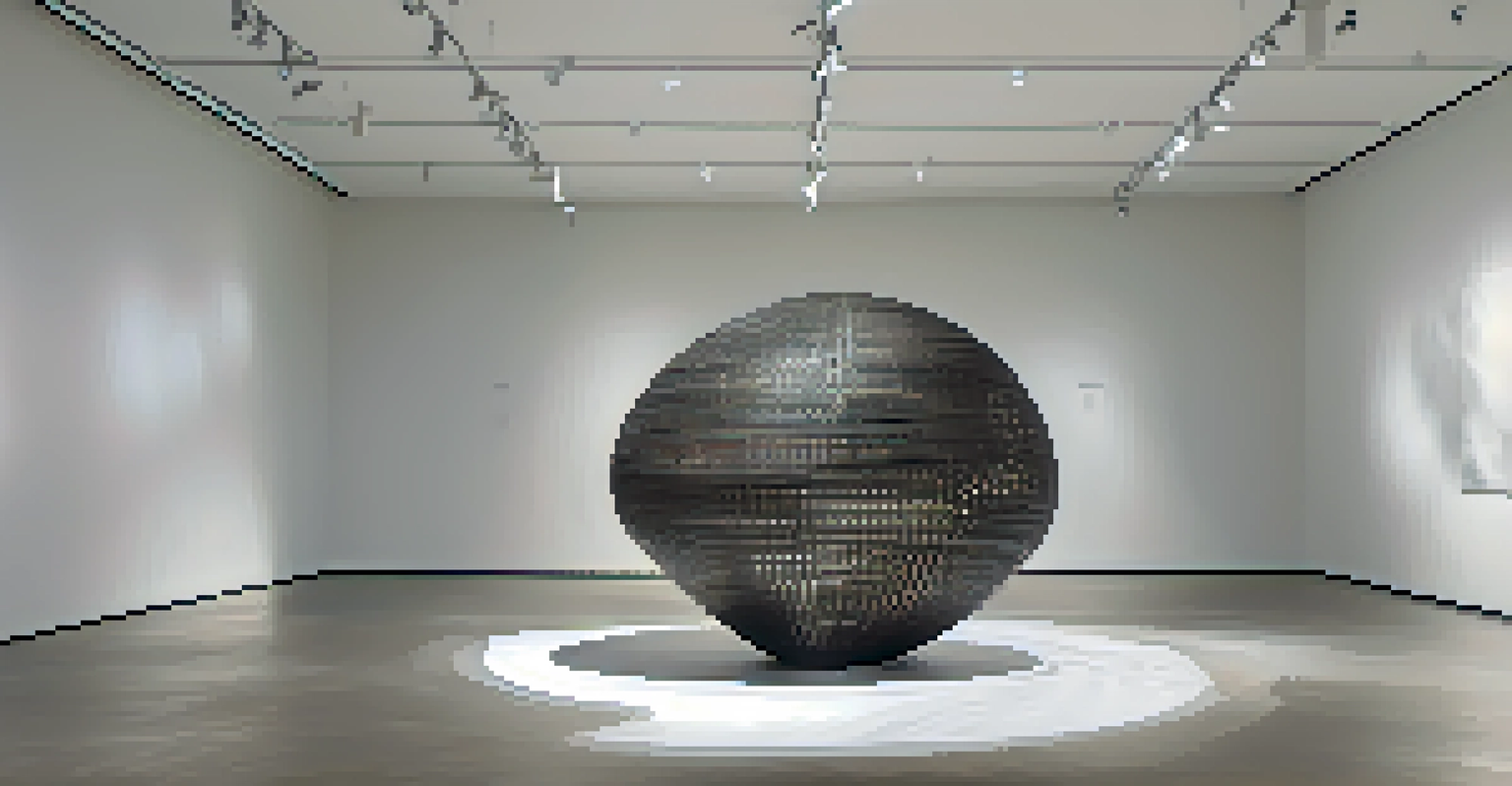Cultural Context in Art: Influences on Artistic Expression

Understanding Cultural Context in Art
Cultural context refers to the social, historical, and environmental factors affecting the creation of art. It helps us understand why artists choose specific themes or techniques, often reflecting the values and beliefs of their society. For instance, the art of the Renaissance was deeply influenced by humanism, emphasizing human experience and emotion.
Art is the most beautiful of all lies.
When we examine a piece of art without considering its cultural context, we risk missing its deeper meanings. Artistic expression is rarely done in a vacuum; it is a response to the world around the artist. Thus, understanding the cultural backdrop can enhance our appreciation and interpretation of the artwork.
Related Resource
The interplay between culture and art is dynamic. As societies evolve, so do their artistic expressions, often reflecting changes in social norms, technology, and global interactions. This fluid relationship makes studying art a fascinating journey through time and culture.
Historical Influences on Artistic Movements
Throughout history, various events have significantly impacted artistic movements. For example, the aftermath of World War I gave rise to Dadaism, a movement that challenged traditional norms and embraced absurdity. Artists used their work to comment on the chaos of their time, showcasing how historical events can shape creative expression.

Moreover, the Civil Rights Movement in the United States inspired a wave of artists to confront social injustices through their work. Artists like Jacob Lawrence used their art to tell the stories of African American experiences, making the cultural context of their time a central theme in their pieces. This illustrates how art can serve as a powerful tool for social commentary.
Cultural Context Enhances Art Understanding
Understanding the cultural context of art allows us to appreciate its deeper meanings and the societal values it reflects.
By understanding these historical influences, we can better grasp the motivations behind various artistic movements. Each piece of art becomes a reflection of its time, capturing the sentiments, struggles, and aspirations of society, thus enriching our understanding of cultural context.
Cultural Identity and Artistic Expression
Cultural identity plays a crucial role in shaping an artist's work. Artists often draw upon their personal experiences and heritage, using their cultural background to inform their artistic expression. This can be seen in the vibrant colors and patterns of Indigenous art, which often tell stories of tradition and community.
Every artist dips his brush in his own soul, and paints his own nature into his pictures.
For many artists, their cultural identity is a source of pride and inspiration. They may use their art to explore themes related to their ancestry, identity, and belonging. This exploration can lead to a deeper understanding of one's self and the broader cultural narratives that shape individual experiences.
Related Resource
As viewers, when we engage with art that reflects diverse cultural identities, we open ourselves up to new perspectives. It encourages empathy and understanding, inviting us to appreciate the richness of different cultural expressions and the stories they tell.
The Role of Religion in Art
Religion has historically been a profound influence on artistic expression across various cultures. Many significant artworks, especially from the Renaissance and Baroque periods, were created to convey religious themes and narratives. These pieces often served as tools for worship, education, and the expression of faith.
For instance, Michelangelo's Sistine Chapel ceiling is not only a masterpiece of art but also a monumental depiction of biblical stories. Such works reveal how deeply intertwined art and religion can be, with artists striving to express the divine through their creativity.
Historical Events Shape Artistic Movements
Artistic movements often arise in response to significant historical events, illustrating how societal changes influence creative expression.
Moreover, contemporary artists continue to explore religious themes, albeit in new and diverse ways. They may challenge traditional representations or reinterpret spiritual concepts, reflecting the evolving relationship between art and religion in today's world.
Social Issues and Artistic Commentary
Art has long been a platform for addressing social issues and advocating for change. Artists often use their work to shine a light on pressing societal concerns, such as inequality, war, and climate change. This form of artistic commentary can provoke thought, inspire action, and foster dialogue among viewers.
For example, the works of artists like Banksy challenge societal norms and bring attention to issues such as consumerism and political strife. Through provocative imagery and clever satirical commentary, these artists transform their art into a powerful medium of social critique.
Related Resource
Engaging with art that addresses social issues allows us to reflect on our own beliefs and actions. It encourages us to consider our role within society and how we can contribute to positive change, illustrating the profound impact of cultural context on artistic expression.
Globalization and Its Impact on Art
Globalization has transformed the art world, facilitating the exchange of ideas, styles, and techniques across cultures. As artists interact with diverse influences, their work often becomes a blend of various cultural elements, leading to innovative and unique artistic expressions. This cross-pollination enriches the art landscape, making it more vibrant and varied.
However, globalization also raises questions about cultural appropriation and authenticity. Artists and observers must navigate the fine line between appreciation and exploitation of cultural symbols. Understanding the cultural context behind these exchanges is essential to ensure that artistic expressions remain respectful and meaningful.
Globalization Blends Cultural Influences
Globalization facilitates the exchange of ideas and styles in art, leading to innovative expressions while raising questions about cultural authenticity.
Through globalization, we gain access to a broader spectrum of art, allowing us to appreciate the interconnectedness of human experiences. This shared journey enhances our understanding of cultural contexts and the influences that shape artistic expression across the globe.
Technology's Influence on Artistic Expression
In today's digital age, technology plays an increasingly vital role in shaping artistic expression. From digital painting to virtual reality installations, artists have embraced new tools that allow for innovative ways of creating and experiencing art. This technological evolution has expanded the boundaries of traditional art forms.
Moreover, technology enables artists to reach wider audiences than ever before. Social media platforms allow for the sharing of art across the globe, fostering connections between artists and audiences regardless of geographical barriers. This connectivity can lead to a more diverse artistic dialogue and collaboration.

However, the rise of technology in art also prompts discussions about authenticity and the value of traditional techniques. As artists navigate this evolving landscape, they continue to explore the balance between embracing new technologies and honoring the cultural contexts that inform their work.